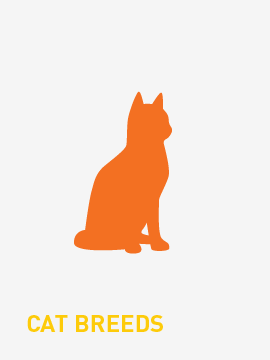The French Bulldog is a small breed of domestic dog. "Frenchies" were bred in the 1800s by Lace first in England then in France when displaced by the Industrial Revolution. Frenchies are playful and affectionate. They are loyal, loving, and wonderful companion dogs. French Bulldogs can be a challenge to train due to their willful and stubborn nature. They require patience, repetition and early socialization.
History
The origin of the modern French Bulldog breed descends directly from the dogs of the Molossians, an ancient Greek tribe. The dogs were spread throughout the ancient world by Phoenician traders. British Molossian dogs were developed into the English Mastiff. A sub-family of the Mastiff were the Bullenbeisser, a type of dog used for bull-baiting.Blood sports such as bull-baiting were outlawed in England in 1835, leaving these "Bulldogs" unemployed. They brought a variety of dogs with them, including miniature Bulldogs. The dogs became popular in France and a trade in imported small Bulldogs was created, with breeders in England sending over Bulldogs that they considered to be too small or with faults such as ears that stood up. By 1860, there were few miniature Bulldogs left in England, such was their popularity in France and due to the exploits of specialist dog exporters.The small Bulldog type gradually became thought of as a breed, and received a name, the Bouledogue Francais.This new Bulldog breed arrived for the first time in England in 1893, with English Bulldog breeds in uproar as the French imports did not meet the new breed standards in place by this time and wanted to prevent the English stock from cross-breeding with the French. The Kennel Club initially recognised them as a subset of the existing English Bulldog breed rather than an entirely new breed. in 1905, the Kennel Club changed its policy on the breed and recognised them separate from the English variety, initially as the Bouledogue Francais, then later in 1912 the name changed to French Bulldog.
Health
As a result of the compacted airway of the French bulldog, they may develop an inability to effectively regulate temperature. While a regular canine may suffer to some degree from the heat, to a Frenchie it may be lethal. It is imperative that they be protected from temperature extremes at all times, and that they always have access to fresh water and shade. As they are a brachycephalic breed (see Brachycephalic syndrome), French Bulldogs are banned by several commercial airlines due to the numbers that have died while in the air. This is because dogs with snub noses find it difficult to breathe when they are hot and stressed out; the cargo space in an aircraft can rise as high as 5.4kg when waiting on the runway.French bulldogs can also suffer from an assortment of back and spinal diseases, most of which are probably related to the fact that they were selectively chosen from the dwarfing examples of the bulldog breed. This condition is also referred to as chondrodysplasia. Some breeders feel that only dogs that have been x-rayed and checked for spinal anomalies should be bred.Patellar luxation is the dislocation (slipping) of the patella (kneecap). In dogs, the patella is a small bone that shields the front of the stifle joint. This bone is held in place by ligaments. As the knee joint is moved, the patella slides in a groove in the femur. The kneecap may dislocate toward the inside (medial) or outside (lateral) of the leg. This condition may be the result of injury or congenital deformities (present at birth). Patellar luxation can affect either or both legs. Testing is available to predict the presence of patellar luxation in a dog.
Eyes
French bulldogs have a tendency towards eye issues. Cherry eye or an everted third eyelid, has been known to occur, although it is more common in English Bulldogs and Pugs. Glaucoma, retinal fold dysplasia, corneal ulcers and juvenile cataracts are also conditions which have been known to afflict French bulldogs. Screening of prospective breeding candidates through the Canine Eye Registration Foundation (CERF) can help eliminate instances of these diseases in offpsring. The skin folds under the eyes of the French bulldog should be cleaned regularly and kept dry. Tear stains are common on lighter-colored dogs.
Birth and reproduction
French bulldogs frequently require artificial insemination or to give birth, with over 80% of litters delivered this way.As well, many French bulldog stud dogs are incapable of naturally breeding. This is because French Bulldogs have very slim hips, making the male unable to mount the female to reproduce naturally. Typically, breeders must undertake artificial insemination of female dogs. Female French bulldogs can also suffer from erratic or 'silent' heats, which may be a side effect of thyroid disease or impaired thyroid function.







































